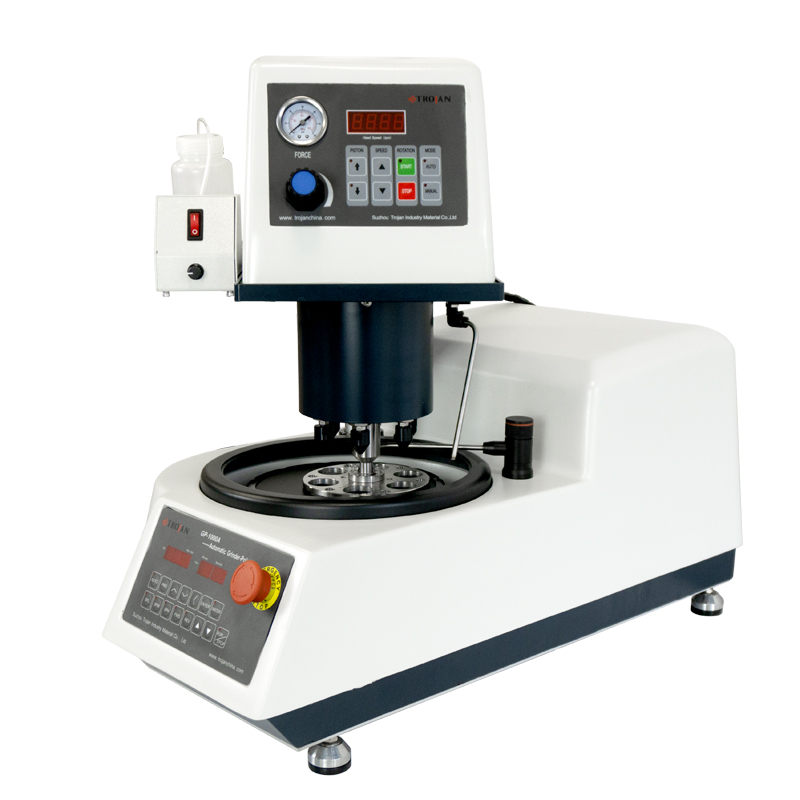A specimen polishing machine is a critical tool in the field of materials science and metallography, utilized to prepare samples for microscopic analysis. The process of specimen preparation involves multiple steps, with polishing being one of the final stages. This crucial step enhances the quality of the sample's surface, making it suitable for accurate microscopic examination. To understand how a specimen polishing machine works and the key components involved in the polishing process, we need to delve into the intricacies of this essential procedure.
Working Principle of Specimen Polishing Machine:
The primary objective of specimen polishing is to create a flat, smooth, and reflective surface on the sample, which allows for accurate observation and analysis under a microscope. The polishing machine achieves this by gradually removing material from the sample's surface through abrasion, resulting in the elimination of scratches, deformations, and irregularities caused by previous steps such as cutting and grinding.
Key Components Involved:
Polishing Wheel/Platen: The polishing wheel, also known as the platen, is a critical component of the
specimen polishing machine. It is a flat disc typically covered with a polishing cloth or pad. The platen rotates at a controlled speed, providing the necessary motion for the sample to come into contact with the polishing abrasive.
Polishing Abrasives: Polishing abrasives are materials with varying degrees of hardness used to remove material from the sample's surface. These abrasives are available in different forms such as powders, suspensions, or pastes. Diamond abrasives are commonly used due to their exceptional hardness and effectiveness in achieving high-quality polished surfaces.
Sample Holder: The sample holder securely holds the sample in place during the polishing process. It is designed to apply consistent pressure to the sample against the polishing abrasive. Depending on the machine's design, the sample holder may rotate, oscillate, or move laterally to ensure uniform material removal.
Water Supply: Water is often used as a lubricant and coolant during the polishing process. It prevents overheating of both the sample and the abrasive, which could result in thermal damage to the material being polished. Water also helps in washing away debris generated during polishing.
Control System: Modern specimen polishing machines are equipped with advanced control systems that allow operators to adjust parameters such as rotational speed, pressure, and polishing time. These controls enable fine-tuning of the polishing process to achieve desired results and ensure consistency across multiple samples.

Polishing Process Steps:
Preparation: Before polishing, the sample undergoes previous steps such as cutting and grinding to remove excess material and create a flat surface. The surface should be free from any deep scratches or deformations before entering the polishing stage.
Mounting: The sample is often mounted in a resin or other mounting medium to create a stable platform. This makes handling and manipulation easier during the polishing process.
Coarse Polishing: In the initial stages of polishing, a relatively coarse abrasive is used to remove the remaining surface irregularities and scratches from the grinding stage. The sample is pressed against the rotating polishing wheel while water and abrasive are applied to the surface.
Fine Polishing: As the surface becomes smoother, finer abrasives are used to further enhance the surface quality. This step focuses on achieving a mirror-like finish that is conducive to accurate microscopic analysis.
Final Polishing: In some cases, a final polishing step is performed using a special polishing cloth or pad with a very fine abrasive. This step is critical for obtaining the highest level of surface reflectivity and clarity.
Cleaning: After the polishing process is complete, the sample is thoroughly cleaned to remove any residual polishing debris, abrasive particles, or contaminants.
In conclusion, a specimen polishing machine operates by utilizing abrasion to gradually remove material from a sample's surface, resulting in a smooth and reflective finish. The key components involved, including the polishing wheel, abrasives, sample holder, water supply, and control system, work in tandem to achieve this goal. The polishing process goes through several stages, from coarse polishing to fine and final polishing, ensuring the sample's surface is well-prepared for microscopic analysis. This meticulous procedure is essential in materials science, enabling researchers to uncover valuable insights into the structure and properties of various materials.

